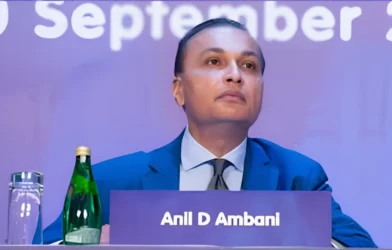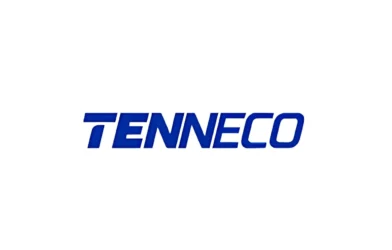As of September 9, 2025
1. Industry Overview
FinTech (financial technology) includes financial services enhanced by technologies like AI, blockchain, and digital payments. FinTech began as back-office automation and evolved into seamless, customer-facing applications embedded in everyday platforms. India ranks third globally with 26 FinTech unicorns valued at $90 billion. Digital infrastructure like UPI and India Stack underpin rapid inclusion and enable scalable innovation.
Source: MarketDataForecast; IMARC; Wikipedia
2. Market Size & Growth Trends
Global: USD 228.02B (2024) → USD 727.17B (2034), CAGR 15.6%.
Alternate: USD 209.74B (2024) → USD 1.58T (2033), CAGR 25.18%.
India: USD 121.4B (2024) → USD 550.9B (2033), CAGR 17.4%.
Alternate: USD 155.7B (2025) → USD 990.45B (2032), CAGR 30.26%.
Source: Zion Research; MarketDataForecast; IMARC; GlobeNewswire

Source: Zion Market Research

Source: IMARC; GlobeNewswire
3. Market Segmentation
- By Services: Digital Payments (46.2% share, 2024), Neobanking (~18.7% CAGR).
- By Users: Retail (62.1% share, 2024).
- By Technology: AI, ML, Blockchain, APIs, Open Banking.
- By Region: Asia-Pacific fastest-growing.
- Source: Mordor Intelligence; MarketDataForecast
4. Key Drivers & Challenges
Drivers
-
- Rising internet and smartphone usage.
-
- Supportive regulations & DPI (India Stack, UPI).
-
- AI-powered innovation, embedded finance.
-
- Financial inclusion agenda (Digital India)
Challenges
-
- Regulatory unpredictability (e.g., Paytm restrictions)
-
- Infrastructure
-
- Cyber security
-
- Data privacy concerns.
5. Competitive Landscape
- Global: PayPal, Stripe, Square, Ant Group, Revolut, Wise.
- India: Paytm, PhonePe, CRED, MobiKwik, Razorpay.
- MobiKwik IPO oversubscribed 120x; Revolut & Wise expanding into India.
Global FinTech Players
-
- Ant Group (China): A fintech powerhouse behind Alipay, known for digital payments, wealth management, and blockchain services. Despite regulatory headwinds, it continues to be a global FinTech leader.
Source: WIRED
- Ant Group (China): A fintech powerhouse behind Alipay, known for digital payments, wealth management, and blockchain services. Despite regulatory headwinds, it continues to be a global FinTech leader.
-
- Stripe (USA): A leading global payment processing and SaaS company offering APIs for e-commerce, billing, and fraud prevention. Valued at ~USD 91 billion, processing over USD 1.4 trillion in payments in 2024.
Source: Wikipedia
- Stripe (USA): A leading global payment processing and SaaS company offering APIs for e-commerce, billing, and fraud prevention. Valued at ~USD 91 billion, processing over USD 1.4 trillion in payments in 2024.
-
- PayPal (USA): A foremost digital payments platform with over 430 million users worldwide. In 2024, it reported USD 31.8 billion in revenue and USD 1.68 trillion in total payment volume.
Source: Investopedia
- PayPal (USA): A foremost digital payments platform with over 430 million users worldwide. In 2024, it reported USD 31.8 billion in revenue and USD 1.68 trillion in total payment volume.
-
- Square / Block, Revolut, Adyen, Coinbase, Wise: Key innovators across payments, digital banking, and crypto, with global reach and diversified services.
Source: Mordor Intelligence
- Square / Block, Revolut, Adyen, Coinbase, Wise: Key innovators across payments, digital banking, and crypto, with global reach and diversified services.
Top Indian FinTech Players
-
- Paytm (One97 Communications): Founded in 2010, Paytm offers UPI payments, QR and Soundbox solutions, and financial services like microcredit, insurance, and NBFC. It achieved its first-ever quarterly profit in Q1 FY26.
Source: Wikipedia, The Times of India
- Paytm (One97 Communications): Founded in 2010, Paytm offers UPI payments, QR and Soundbox solutions, and financial services like microcredit, insurance, and NBFC. It achieved its first-ever quarterly profit in Q1 FY26.
-
- PhonePe: Launched in 2015, PhonePe is a UPI-based digital payments platform serving over 530 million users, offering utility payments, recharge, and in-app investment services.
Source: Wikipedia
- PhonePe: Launched in 2015, PhonePe is a UPI-based digital payments platform serving over 530 million users, offering utility payments, recharge, and in-app investment services.
-
- MobiKwik: Founded in 2009, MobiKwik is a mobile wallet and payments company with wallet approvals since 2013. It operates across consumer payments, small loans, and payment gateways. Its March 2024 IPO was oversubscribed 120x.
Source: Wikipedia, Reuters
- MobiKwik: Founded in 2009, MobiKwik is a mobile wallet and payments company with wallet approvals since 2013. It operates across consumer payments, small loans, and payment gateways. Its March 2024 IPO was oversubscribed 120x.
-
- Razorpay: A prominent Indian payment gateway and B2B fintech platform. Recently acquired a majority stake (~USD 30 million) in PAY (POP) to strengthen its consumer payments portfolio.
Source: The Economic Times
- Razorpay: A prominent Indian payment gateway and B2B fintech platform. Recently acquired a majority stake (~USD 30 million) in PAY (POP) to strengthen its consumer payments portfolio.
-
- CRED: Founded in 2018 by Kunal Shah, CRED serves credit card users, offering rewards-based bill payments and financial services. Valued at USD 6.4 billion, with rapidly growing user base and revenue.
Source: Wikipedia
- CRED: Founded in 2018 by Kunal Shah, CRED serves credit card users, offering rewards-based bill payments and financial services. Valued at USD 6.4 billion, with rapidly growing user base and revenue.
Source: Reuters; Financial News London; Wikipedia
6. Technological Advancements
-
- AI / GenAI: Used in fraud detection, risk, chatbots, KYC, personalized services. Market expected to reach USD 61.6B by 2032; AI solutions also drive India’s innovation front.
-
- Blockchain / DeFi: Global DeFi growth, large-scale adoption in India for traceable, secure payments.
-
- Open Banking / APIs / Embedded Finance: Digital API-led integration accelerating embedded payments and real-time services.
-
- UPI Infrastructure & India Stack: Foundational in India’s payments revolution (500M users, 20B transactions/month). Globally unmatched real-time payments capacity.
Source: Times of India; Wikipedia; EY
7. Regulatory Environment
- India: RBI oversight, UPI rules, India FinTech Foundation.
- Global: PSD2 (EU), Open Banking, AML/KYC, CBDC frameworks.
- Source: RBI; EU Commission; EY
8. Consumer Trends
- 90%+ Indian financial institutions cite AI as critical.
- Neobanks projected 394M global users by 2024.
- Source: Economic Times; DocuClipper
9. Supply Chain & Operations
- Digital Rails: Cloud-native APIs, real-time payment infrastructure (UPI, embedded finance).
- Security & Scalability: Balancing innovation and trust (cybersecurity, privacy).
10. Future Outlook & Strategic Recommendations for Investors
Future Outlook
- Sustained Long-Term Growth Potential: FinTech is projected to become a $1.5 trillion industry globally by 2030, with revenue growth expected to outpace traditional banking by nearly three times (15% vs. 6% CAGR).
- Resilient FinTech Transformation: Even amid funding slowdowns, FinTechs—especially in AI and digital assets—are continuing to show resilience. By mid-2025, global FinTech funding, though down, still reached $44.7 billion across 2,216 deals, with investment in digital assets and AI-enabled platforms particularly robust.
- Emerging Investor Confidence: Several mature FinTech players are now entering mainstream capital markets. Robinhood’s imminent inclusion into the S&P 500 highlights the sector’s rising institutional credibility. Additionally, blockchain-native lender Figure is targeting a $4.1 billion valuation in its upcoming U.S. IPO, showcasing strong investor appetite.
- Strategic M&A and Consolidation on the Horizon: M&A activity is expected to accelerate in 2025 as the market stabilizes, paving the way for strategic consolidation and exits.
- Embedding Finance — A Tremendous Growth Frontier: Embedded finance is forecast to soar to a $7.2 trillion opportunity by 2030, eclipsing the combined assets of traditional FinTech firms and large financial incumbents.
- Strong Profitability Trends: Public FinTech firms are becoming increasingly profitable—69% are now reporting profits, up from less than 50% previously—indicating growing industry maturity and resilience. They also posted a 21% YoY revenue growth compared to just 6% for traditional financial services.
Strategic Recommendations for Investors
- Lean into AI-empowered FinTechs: Focus on FinTechs that are actively embedding AI/GenAI into operations—from intelligent fraud detection, personalized advising, to process automation—as these technologies are becoming fundamental to differentiation and efficiency.
- Prioritize Profitability, Not Just Growth: As investor sentiment shifts, favor companies showing clear paths to profitability and efficient cost structures. Be cautious of FinTechs with unsustainably high margins or unrealistic earnings promises. Analysts have identified Visa and Mastercard as sound value picks, while advising caution on over-leveraged players like PayPal.
- Pursue Embedded Finance Platforms: Embedded finance continues to redefine the industry by integrating financial services directly into non-financial platforms—this area offers outsized growth potential.
- Monitor IPO & M&A Activity: Expect strong market activity, including IPOs (e.g., Figure) and strategic acquisitions, as firms consolidate; these present both investment entry and exit opportunities.
- Diversify Across Business Models: Invest across segments—payments, neobanking, DeFi/blockchain, embedded finance—to spread risk and capture diverse revenue streams.
- Watch Regulatory Tailwinds and Structural Shifts: Regulatory clarity, especially around blockchain, AI, and embedded finance, will shape future success. Be alert to jurisdictions enabling tokenization, open finance frameworks, and CBDC integration.
- Explore Asset Tokenization: Tokenization of real-world assets could unlock new liquidity and investment models in private markets. While nascent, economies like GIFT City are developing frameworks to support it.
Sources: BCG, KPMG, Reuters, QED Investors, Financial News London, TechMagic, Economic Times, CTO Magazine, McKinsey, Business Insider, Barron’s, World Economic Forum, Wikipedia
Disclaimer: This article is based on information available from public sources. It has not been reported by EQMint journalists. EQMint has compiled and presented the content for informational purposes only and does not guarantee its accuracy or completeness. Readers are advised to verify details independently before relying on them.
11. Glossary
- API (Application Programming Interface): A software interface that allows different applications to communicate; critical in open banking and embedded finance.
- CBDC (Central Bank Digital Currency): A digital form of a country’s fiat currency issued and regulated by its central bank.
- Challenger Bank: A small, newly established bank leveraging technology to compete with traditional banks, often digital-first.
- Crowdfunding: A method of raising capital through the collective contributions of a large number of individuals, typically online.
- Cryptocurrency: A digital currency that uses cryptography for security and operates on decentralized networks like blockchain.
- DeFi (Decentralized Finance): Financial applications built on blockchain that operate without traditional intermediaries, enabling lending, borrowing, and trading via smart contracts.
- InsurTech: A segment of FinTech focused on innovation in insurance, leveraging AI, IoT, and big data for better risk management and customer experience.
- KYC (Know Your Customer): A regulatory requirement for financial institutions to verify the identity of clients before engaging in transactions.
- Neobank: A digital-only bank offering banking services through mobile apps or websites, without traditional branch networks.
- P2P Lending (Peer-to-Peer Lending): Online platforms that connect borrowers directly with lenders, bypassing traditional banks.
- RegTech (Regulatory Technology): Technology solutions that help financial institutions comply efficiently with regulations, including AML and KYC.
- Tokenization: The process of converting rights to an asset (e.g., real estate, securities) into a digital token on a blockchain for trading or investment.
- UPI (Unified Payments Interface): India’s real-time payment system allowing seamless money transfer via mobile applications.
12. References
- MarketDataForecast – https://www.marketdataforecast.com/market-reports/fintech-market
- Mordor Intelligence – https://www.mordorintelligence.com/industry-reports/global-fintech-market
- IMARC – https://www.imarcgroup.com/india-fintech-market
- Globe Newswire – https://www.globenewswire.com
- Zion Market Research – https://www.zionmarketresearch.com/report/fintech-market
- EY Report – https://www.ey.com/en_in
- Wikipedia – https://en.wikipedia.org/wiki/Financial_technology_in_India
- BCG – FinTech’s Scaled Winners and Emerging Disruptors (2025): https://www.bcg.com/publications/2025/fintechs-scaled-winners-emerging-disruptors
- KPMG – Pulse of FinTech H1 2025: https://kpmg.com/xx/en/what-we-do/industries/financial-services/pulse-of-fintech.html
- Reuters – Blockchain Lender Figure IPO Valued at $4.1B (Sept 2, 2025): https://www.reuters.com/business/blockchain-lender-figure-seeks-up-41-billion-valuation-us-ipo-2025-09-02
- QED Investors – 2025 FinTech Predictions: https://www.qedinvestors.com/blog/qeds-2025-fintech-predictions
- Financial News London – AI FinTech Drives Deals: https://www.fnlondon.com/articles/perella-weinberg-eyes-european-tech-push-as-ai-fintech-drives-deals-308e531b
- TechMagic – FinTech Trends 2025: https://www.techmagic.co/blog/fintech-trends
- Economic Times – Where the FinTech Sector is Headed Next (QED/BCG Global Report 2025): https://economictimes.indiatimes.com/tech/technology/where-the-fintech-sector-is-headed-next-qed-bcg-global-fintech-report-2025/articleshow/121565312.cms
- CTO Magazine – FinTech Trends Beyond 2025: https://ctomagazine.com/fintech-trends-to-watch-out-for-2025-beyond
- McKinsey – FinTechs: A New Paradigm of Growth: https://www.mckinsey.com/industries/financial-services/our-insights/fintechs-a-new-paradigm-of-growth
- Business Insider – 15 Most Promising AI-powered FinTech Startups: https://www.businessinsider.com/15-most-promising-ai-powered-fintech-startups-according-top-vcs-2024-11
- Barron’s – Visa and Mastercard Stock Ratings, PayPal Caution: https://www.barrons.com/articles/visa-mastercard-truist-stock-rating-8f922e9c
- World Economic Forum – Future of Global FinTech 2025: https://www.weforum.org/publications/the-future-of-global-fintech-2025
- Wikipedia – Open Finance / Asset Tokenization: https://en.wikipedia.org/wiki/Open_finance, https://en.wikipedia.org/wiki/Asset_tokenization









